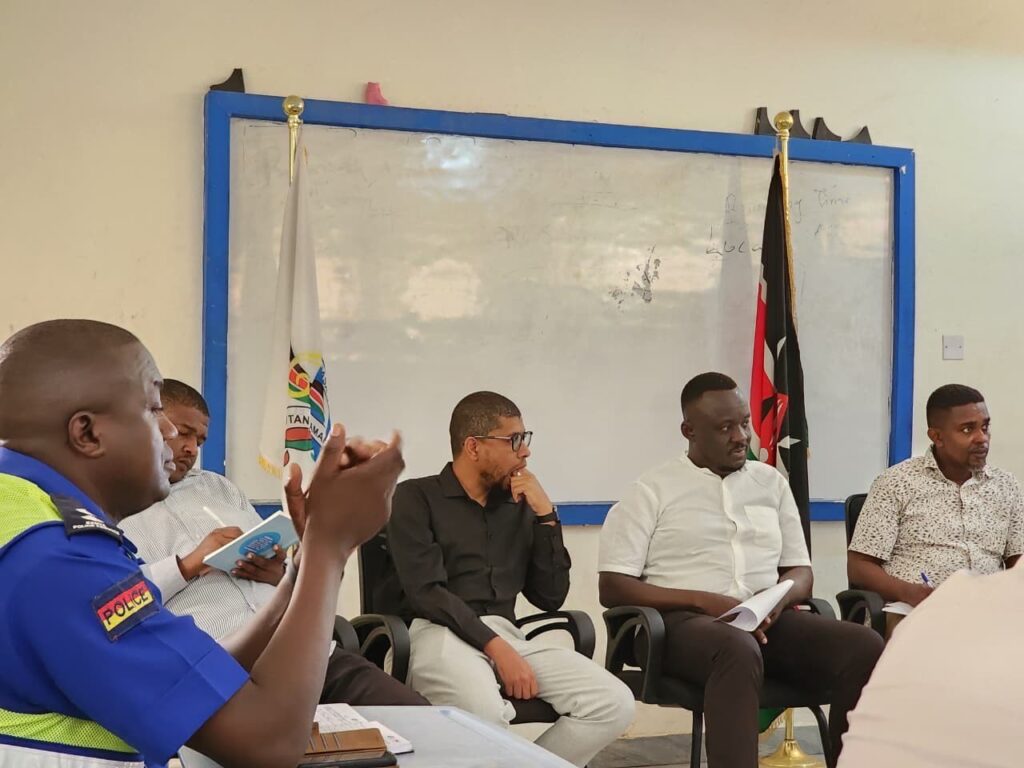By Chari Suche
The Mombasa County Government has unveiled a series of initiatives aimed at improving road safety, easing traffic congestion, and addressing persistent waste management challenges, in partnership with national agencies and international partners.
Daniel Manyala, the County Executive Committee Member (CECM) for Transport, Infrastructure, and Governance, said the county has been working closely with key stakeholders including Bloomberg Philanthropies, the National Police Traffic Division, the National Transport and Safety Authority (NTSA), and the Kenya Urban Roads Authority (KURA).
He noted that while the county has established a daily garbage collection schedule where lorries pick waste overnight from designated collection points, residents’ non-compliance continues to undermine the program.
“Some citizens still dispose of garbage on walkways and drainage channels, particularly during the rainy season. This leads to blocked drainage systems, flooding, and unsanitary conditions,” Manyala said.
The CECM further raised concern about business operators who have encroached on pedestrian walkways, obstructing movement and compromising safety.
“Nearly 50 percent of Mombasa residents rely on walking as their main mode of transport. They need clear, safe walkways. Encroachment not only inconveniences them but also contributes to insecurity,” he emphasized.
On traffic management, Manyala said collaborative measures between the County Traffic Division and the National Police Traffic Department had eased congestion during rush hours under the “Happy Hour Program,” which manages heavy traffic more efficiently at peak times.
Chief Officer for Transport and Infrastructure, Engineer Ally Shariff, announced the reinstatement of traffic lights across Mombasa to regulate flow and enhance safety.
“The county government has reintroduced traffic lights to improve road discipline, reduce congestion, and safeguard pedestrians. A sensitisation program will also be launched to educate citizens on how the system will operate,” he said.
Shariff explained that traffic lights have been programmed to manage the city’s busiest hours; the morning peak from 7am to 10am and the evening peak from 4pm to 7pm.
He added that zebra crossings have also been drawn in key locations to provide safe passage for pedestrians.
Jibril Ali, Chief Officer in the Governance and Transport Department, stressed the need for residents to cooperate with the new traffic measures.
“Mombasa must align with its status as a city. Citizens must obey signage, follow programs, and respect traffic laws to ensure order and safety,” he said.
Engineer Abdul Hakim Makarani, Senior Engineer at KURA’s Coast Region office, noted that the agency has built pedestrian walkways at safer distances from roads, introduced school zone signs, and implemented speed-calming measures such as bumps and rumble strips.
However, he expressed concerns that adherence to road signs remains low despite installing clear signage and physical speed control measures adding that their impact will only be realized if all road users comply.
The officials underscored the importance of public cooperation, warning that infrastructure investments and safety programs would not succeed without residents’ discipline and responsibility.
They affirmed the county government’s commitment to enhancing urban safety, transport management, and environmental cleanliness, positioning Mombasa as a modern, orderly, and pedestrian-friendly city.


